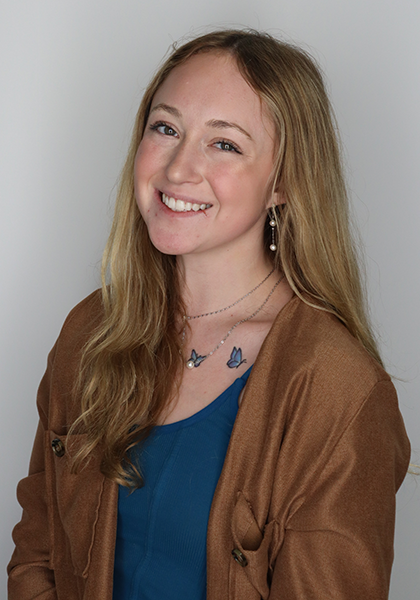NASA mentor guides student’s career trajectory
Materials Science and Engineering student Lauren Fitzwater heeds advice to pursue a minor in additive manufacturing.
When Lauren Fitzwater accepted an internship at NASA’s Jet Propulsion Laboratory last summer, she wasn’t looking to become a rocket scientist, but the competitive internship in Pasadena, California did help launch her aspiration to work in metals additive manufacturing. She was selected in part because she had spent the previous semester working on research projects Sneha Prabha Narra’s Engineering Materials for Transformative technologies (EMIT) additive manufacturing lab.

The material science and engineering major had gained a considerable amount of experience in material characterization of 3D metal parts in both roles. When her mentor at NASA learned that engineering students could earn a minor in additive manufacturing (AM) at Carnegie Mellon, she urged Fitzwater to pursue what she said would be a great opportunity.
Fitzwater, who took that advice, initially found her way to additive manufacturing through Carnegie Mellon’s Highway to Undergraduate Research in the Academic Year (HURAY) program. When she applied for the program that began in the spring of 2023, she chose the AM project with Narra, an assistant professor of mechanical engineering, from among the list of funded research fellowships that were available for students with federal work-study funding and little to no prior research experience.
The HURAY program funded her research work for two semesters. Afterwards, Narra and her team liked Fitzwater, and found a way to keep her on for another semester in the spring of 2024.
As the only undergraduate student in the group, she relied on the graduate students for help.
“Justin Miner and Mikhail Khrenov were so supportive—always giving me positive feedback and helping me grow within the lab,” said Fitzwater.
She says that thanks to their encouragement, she found the confidence and opportunity she needed to work more independently. Most recently she was able to take the lead on a project aimed at characterizing the heat treatment kinetics of the L-59 low-alloy steel used on the wire arc additive manufacturing (WAAM) equipment at Mill 19. She says that many setbacks and the resulting trial and error it took to obtain usable data provided valuable lessons.
Perhaps best of all was how her research experience has enriched her academic studies and created a career path she now wants to follow.
“I really like materials characterization, and additive manufacturing is so cool—I want to do it and I want to see others get into it too,” said Fitzwater.
Additive manufacturing is so cool.
Lauren Fitzwater, student, Material Science and Engineering
Fitzwater took her first AM course: Additive Manufacturing and Materials in the fall of 2023 with Tony Rollett, a professor of materials science and engineering.
It was an entertaining and informative class where they studied additive manufacturing processes and how to identify and prevent defects in printed parts. Rollett also taught them how to read and analyze research papers related to AM, and how to get relevant information from it.
Having had so much hands-on experience has put her ahead in her AM classes where she was able to quickly grasp metallography or use line intercept methods, or even polish and etch materials, because she has already done the same work in a lab.
“Some of it was so easy for me that I was able to help my group members—especially the mechanical engineering students, who don’t have the same materials training,” said Fitzwater.
Fitzwater will head to Cincinnati, Ohio for an internship with Procter and Gamble this summer, where she will work on the characterization of absorbent textiles.
Working with polymers, textiles, and different characterization techniques will expand her experience, but she also believes it will confirm her decision to pursue a career in metals additive manufacturing.
